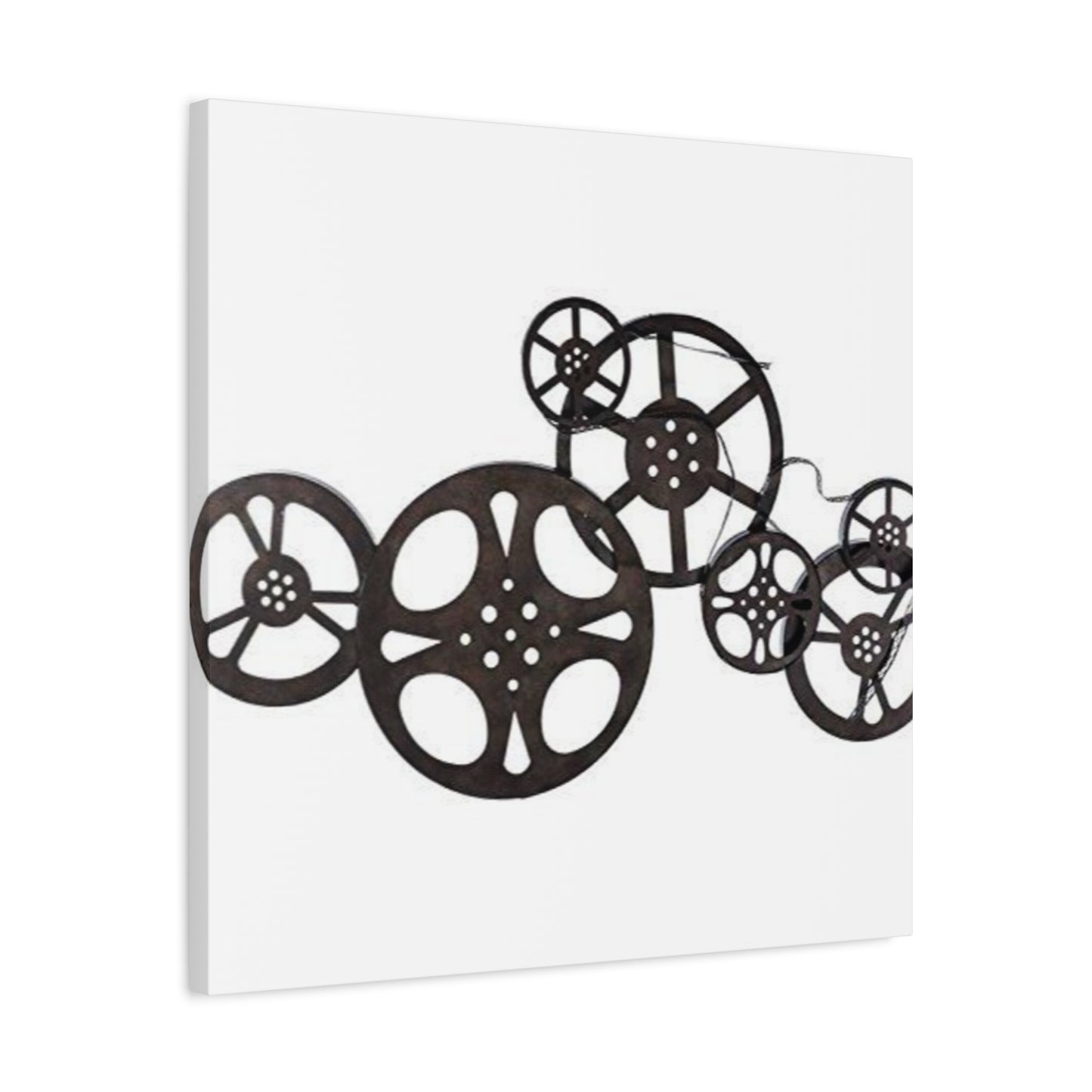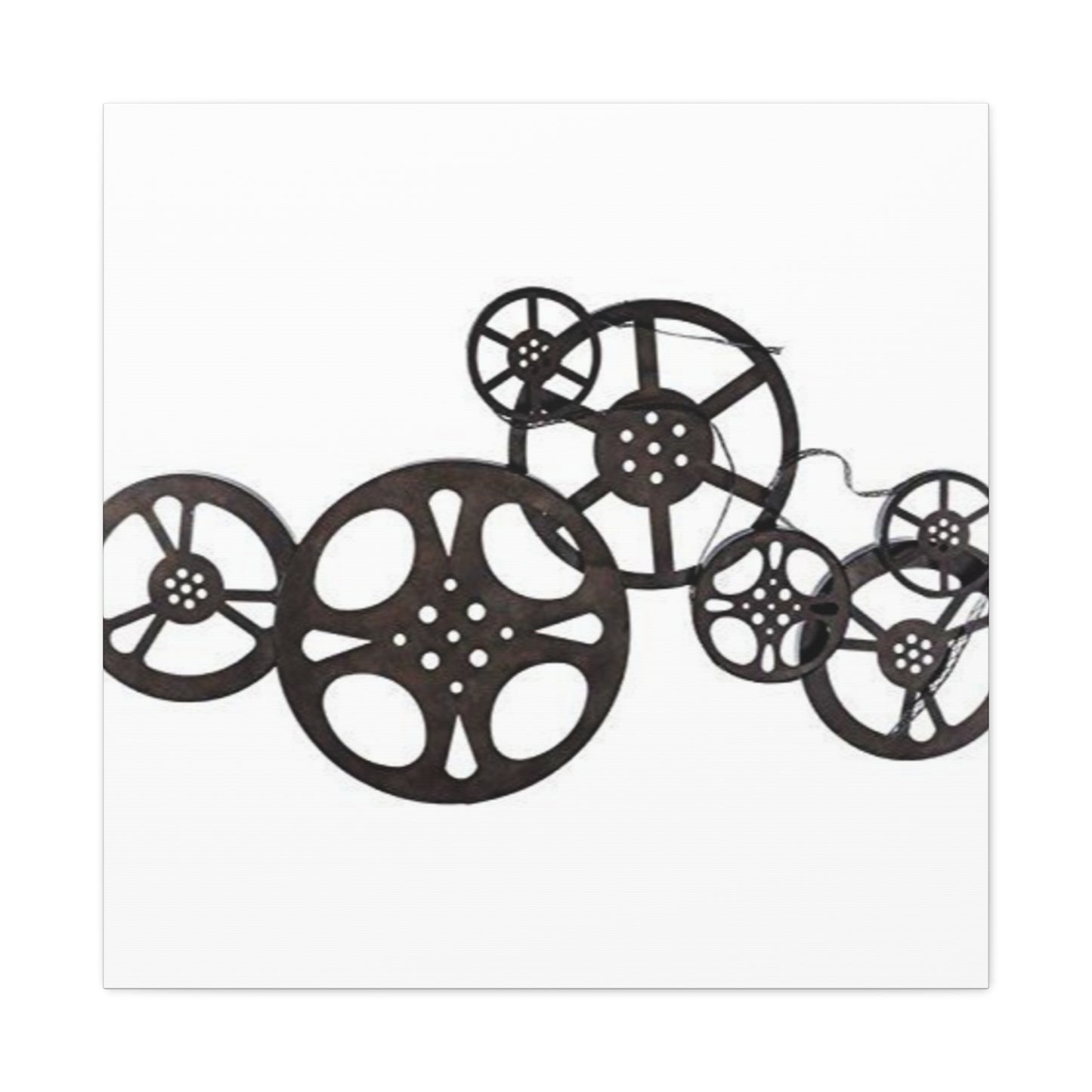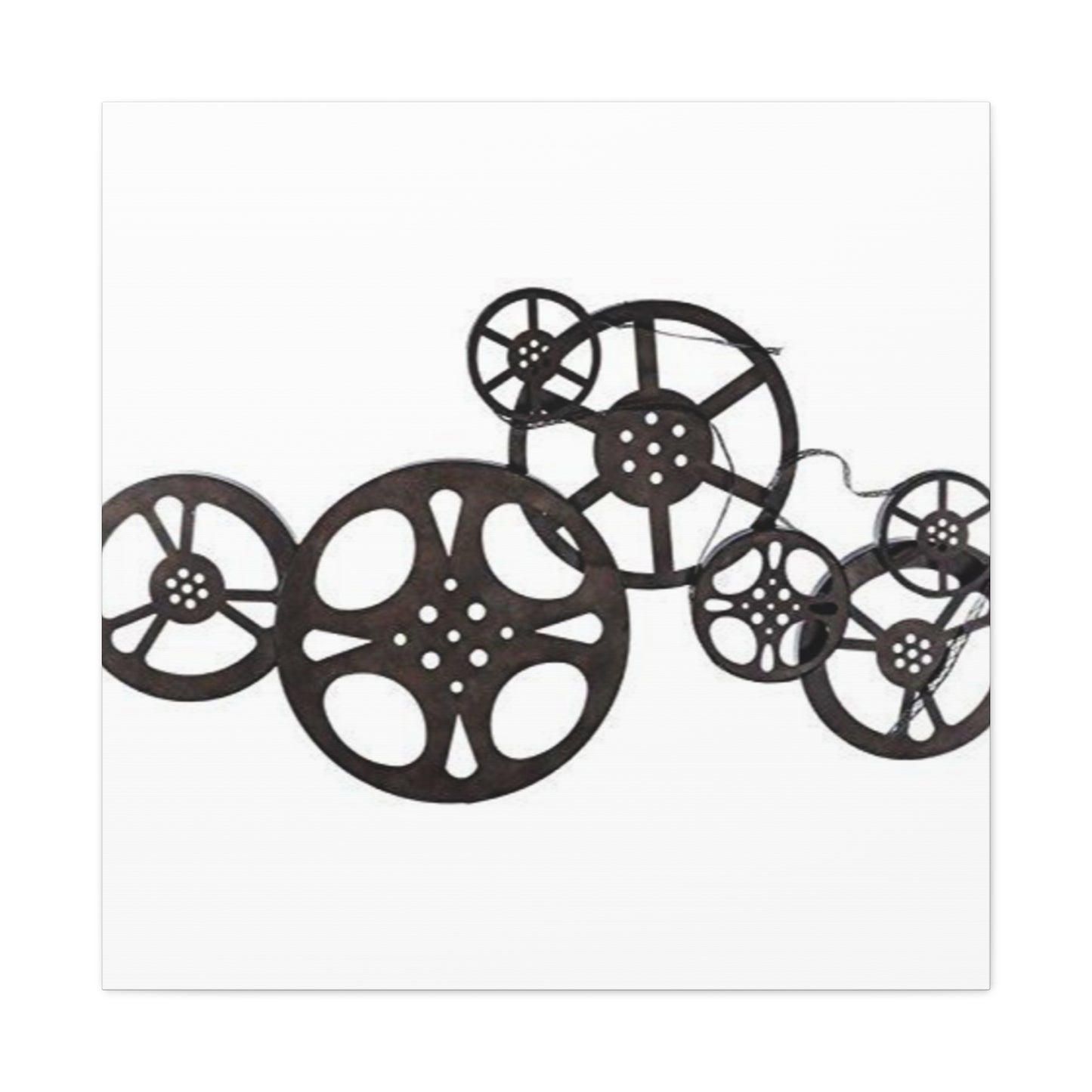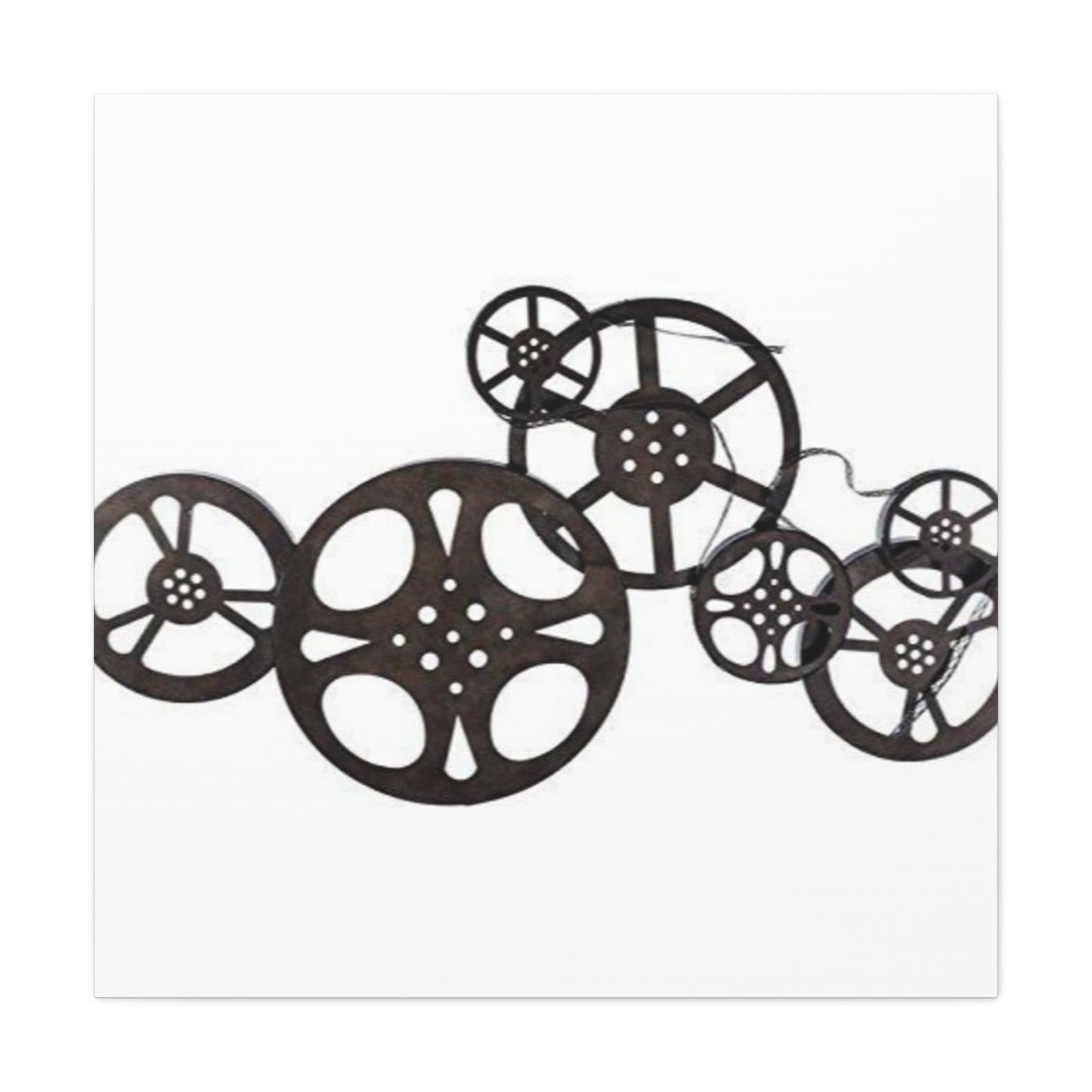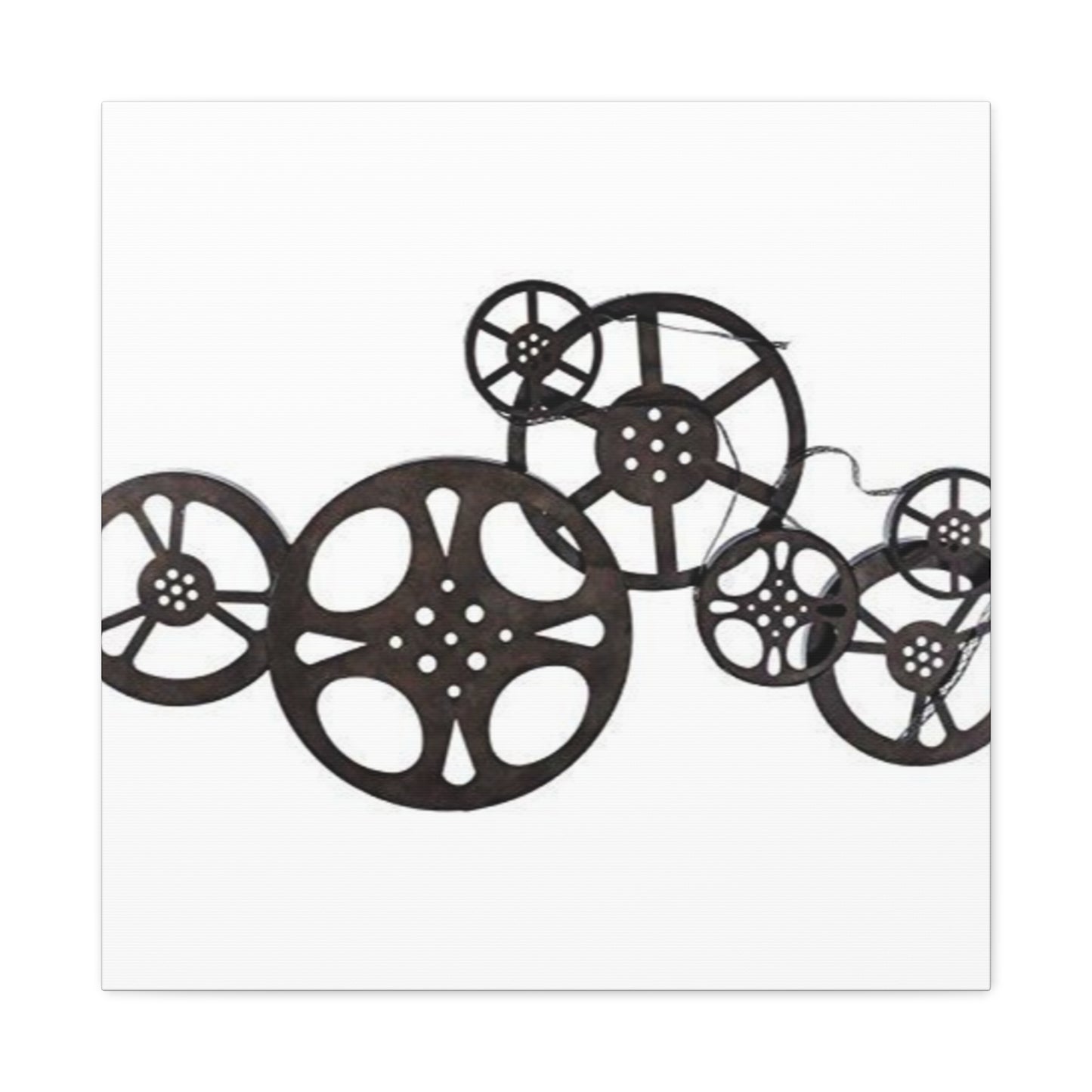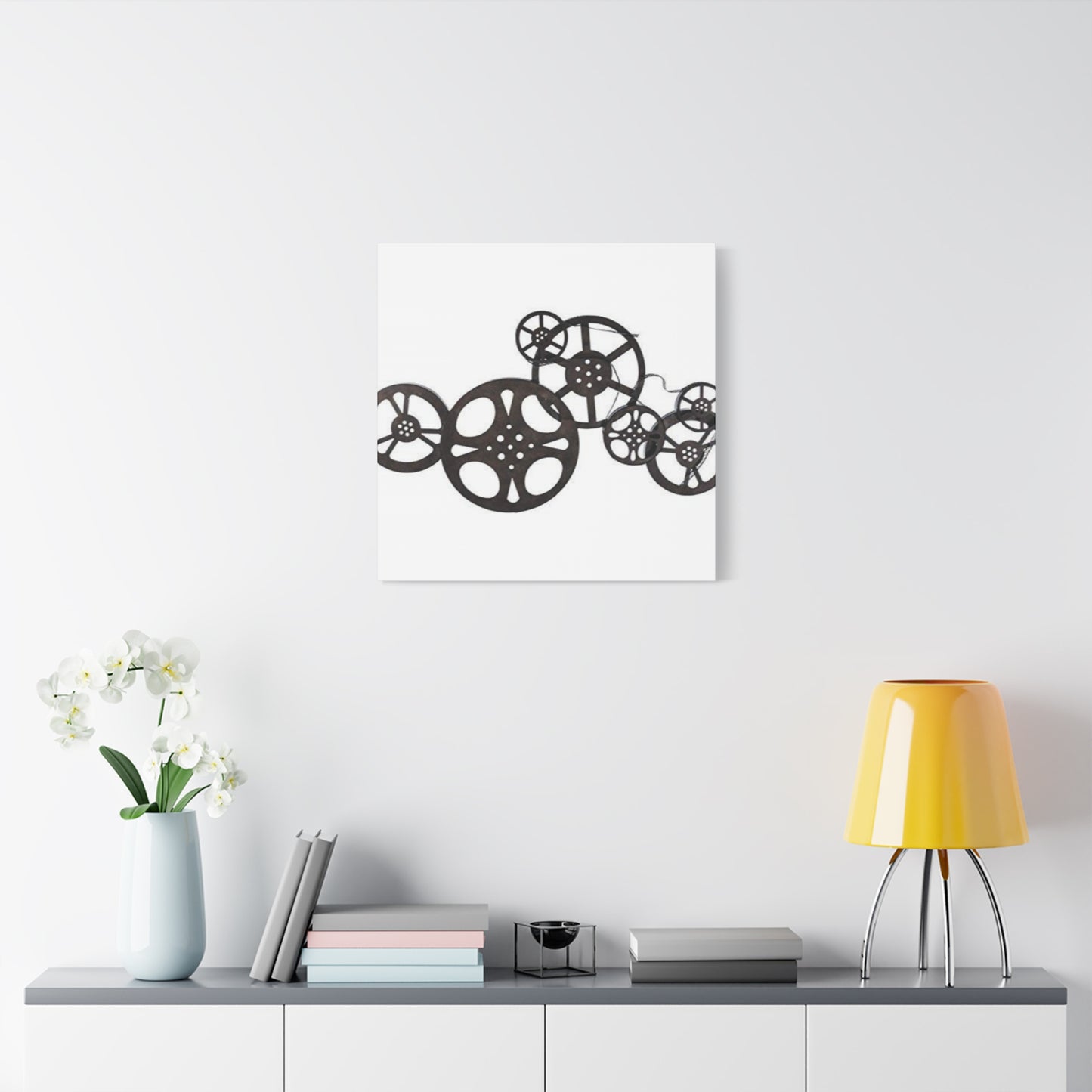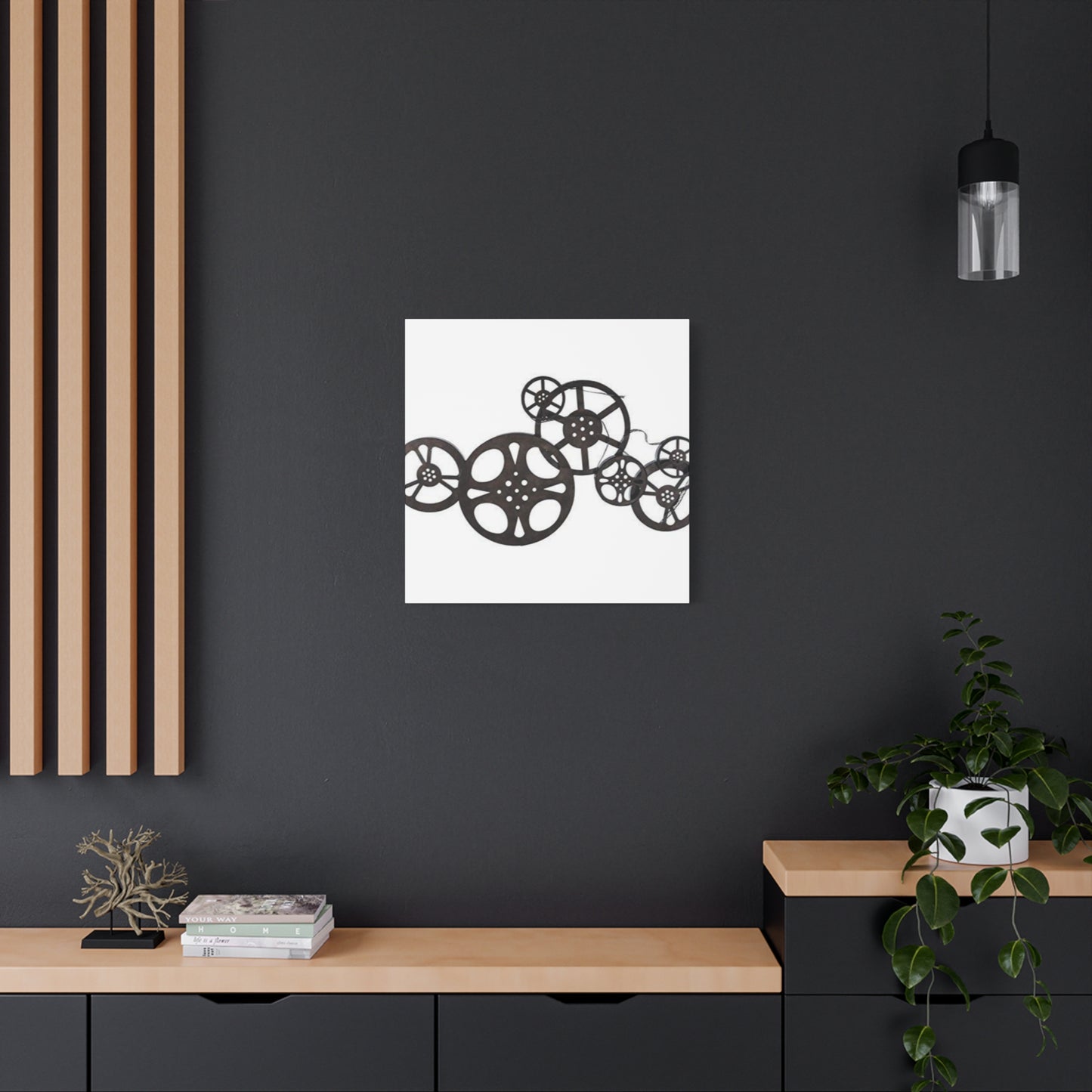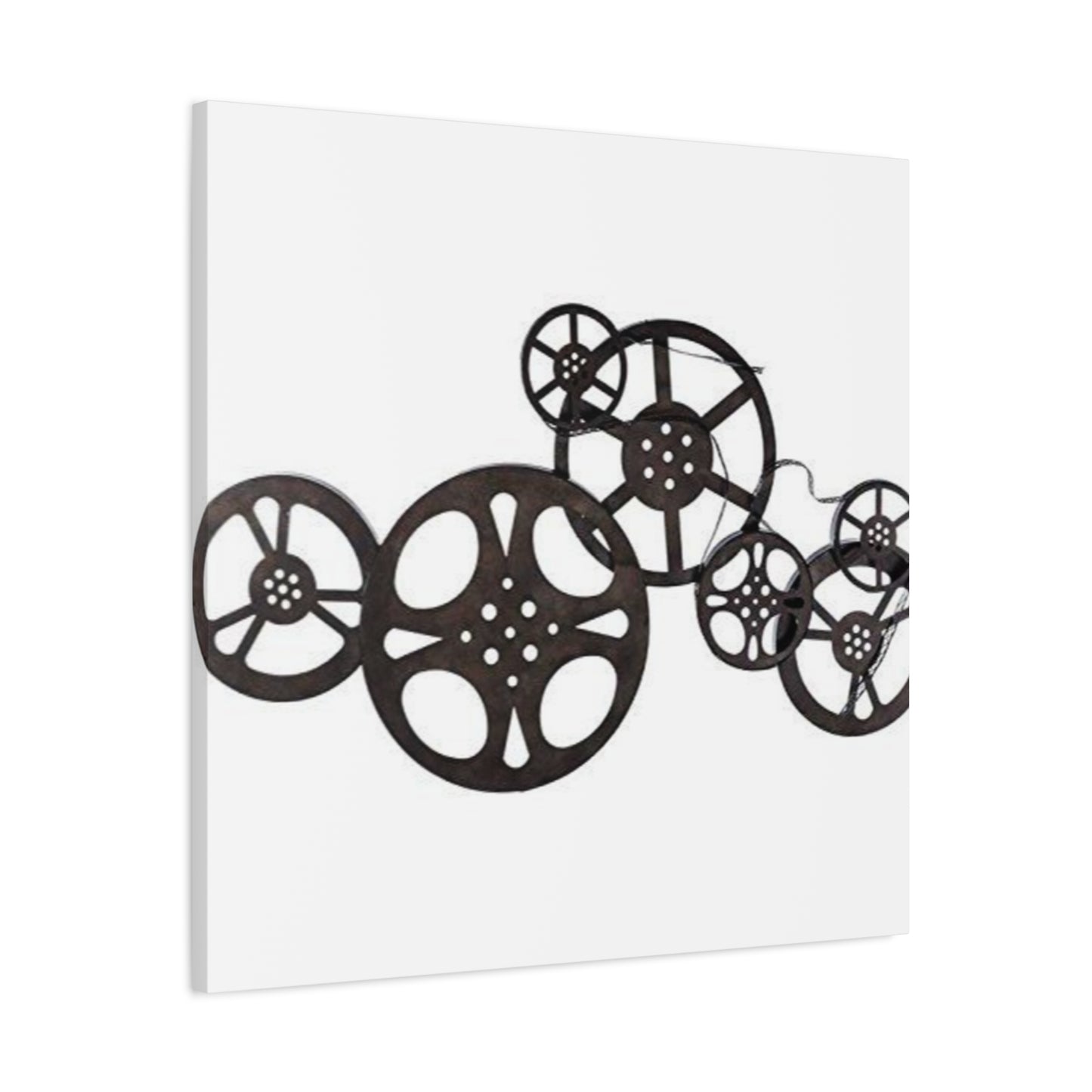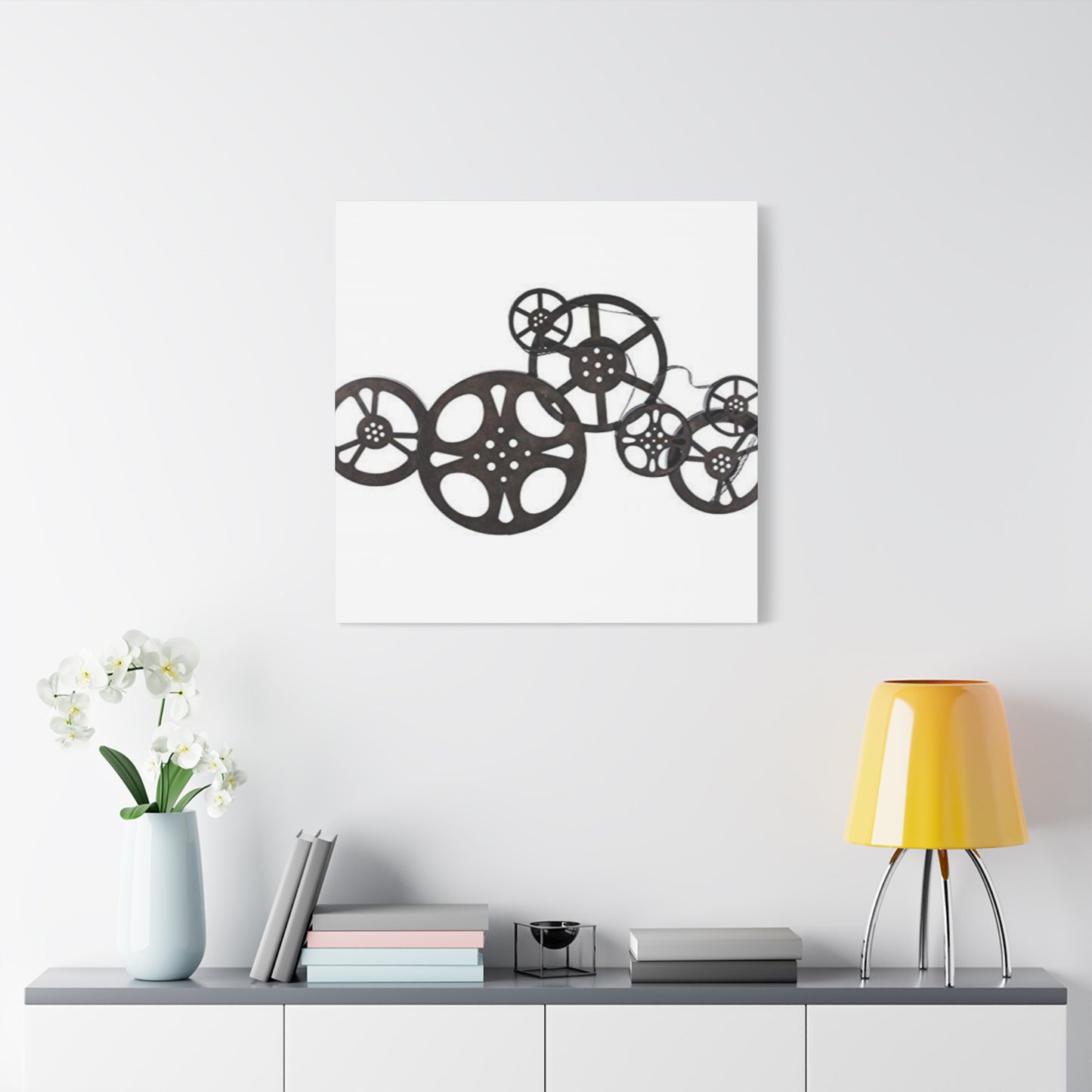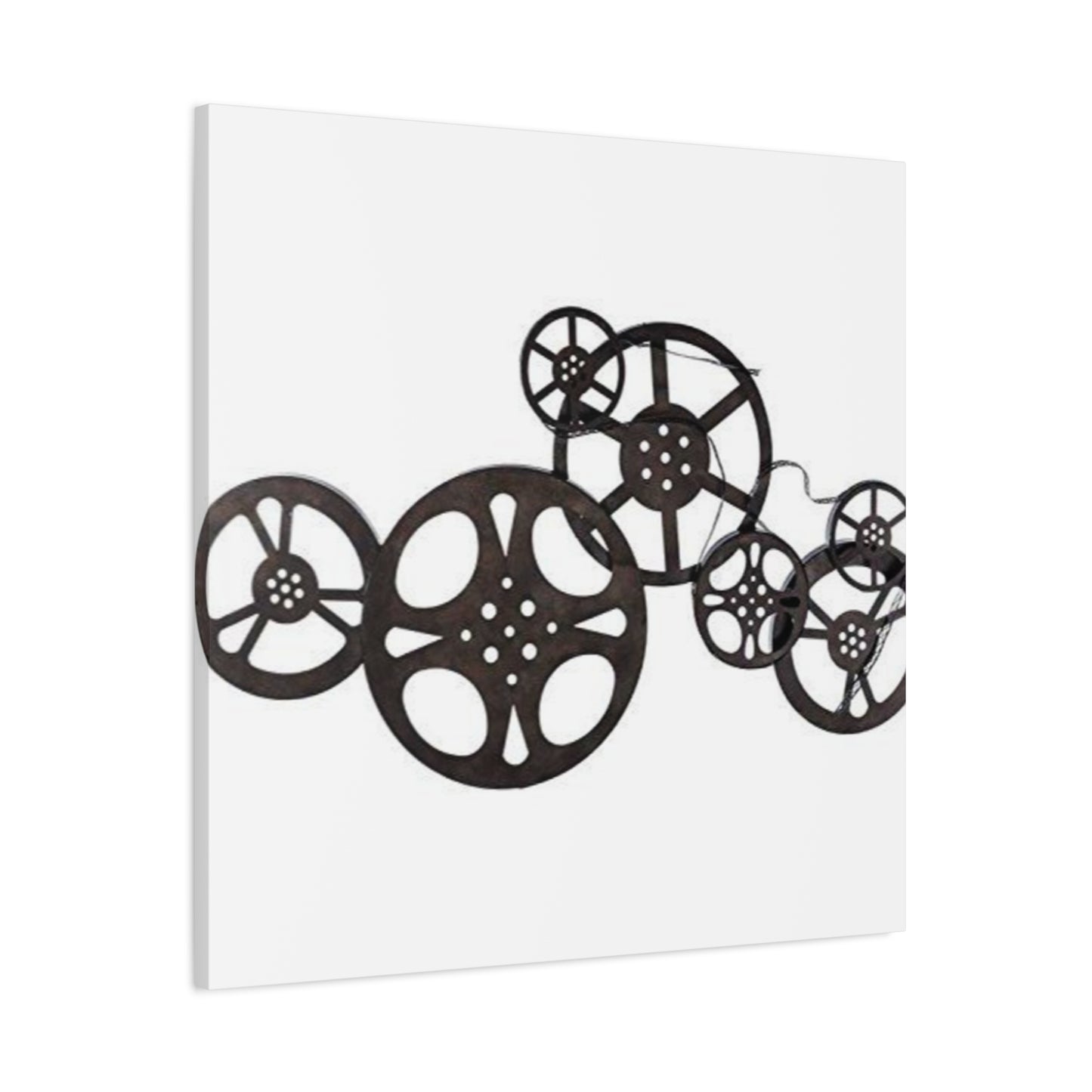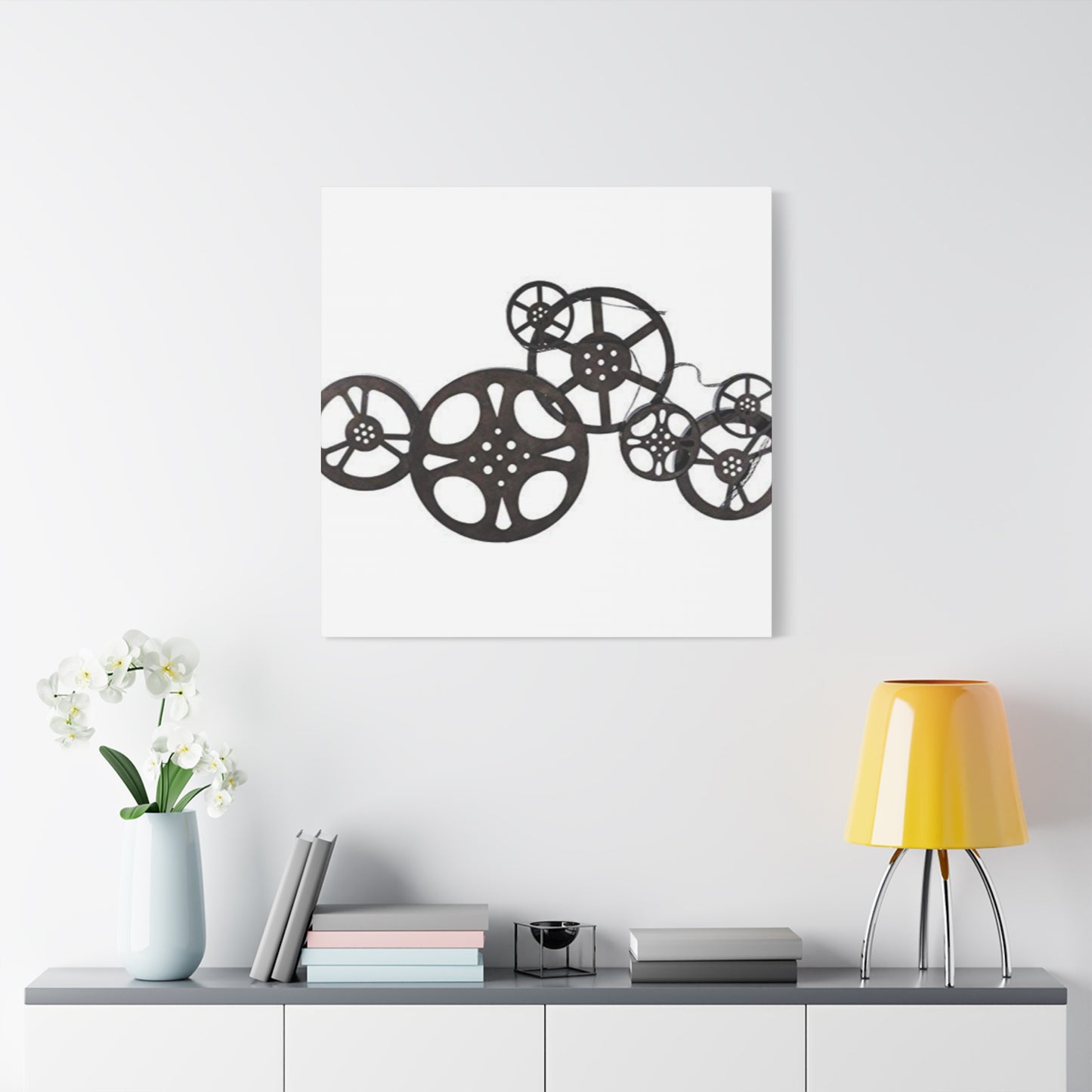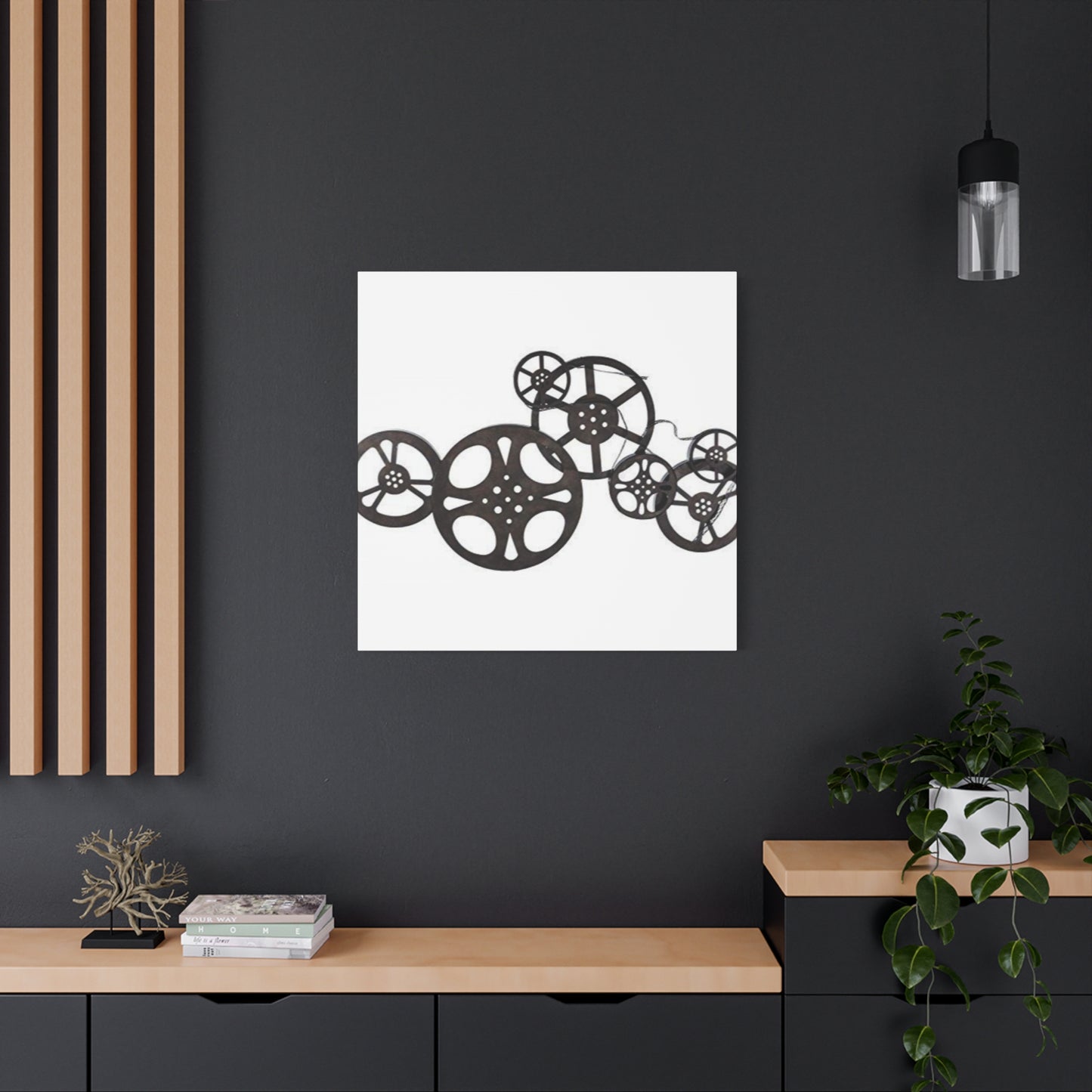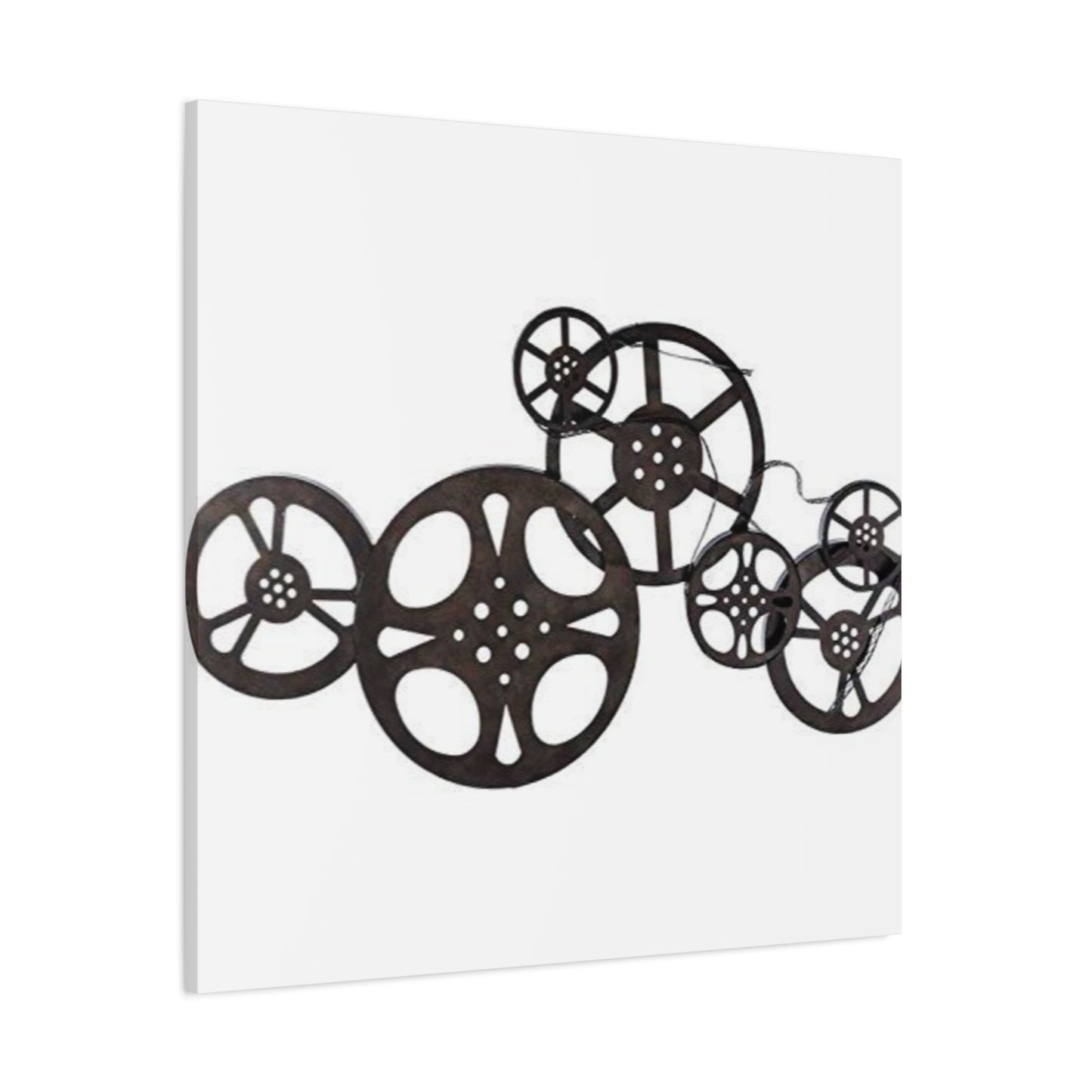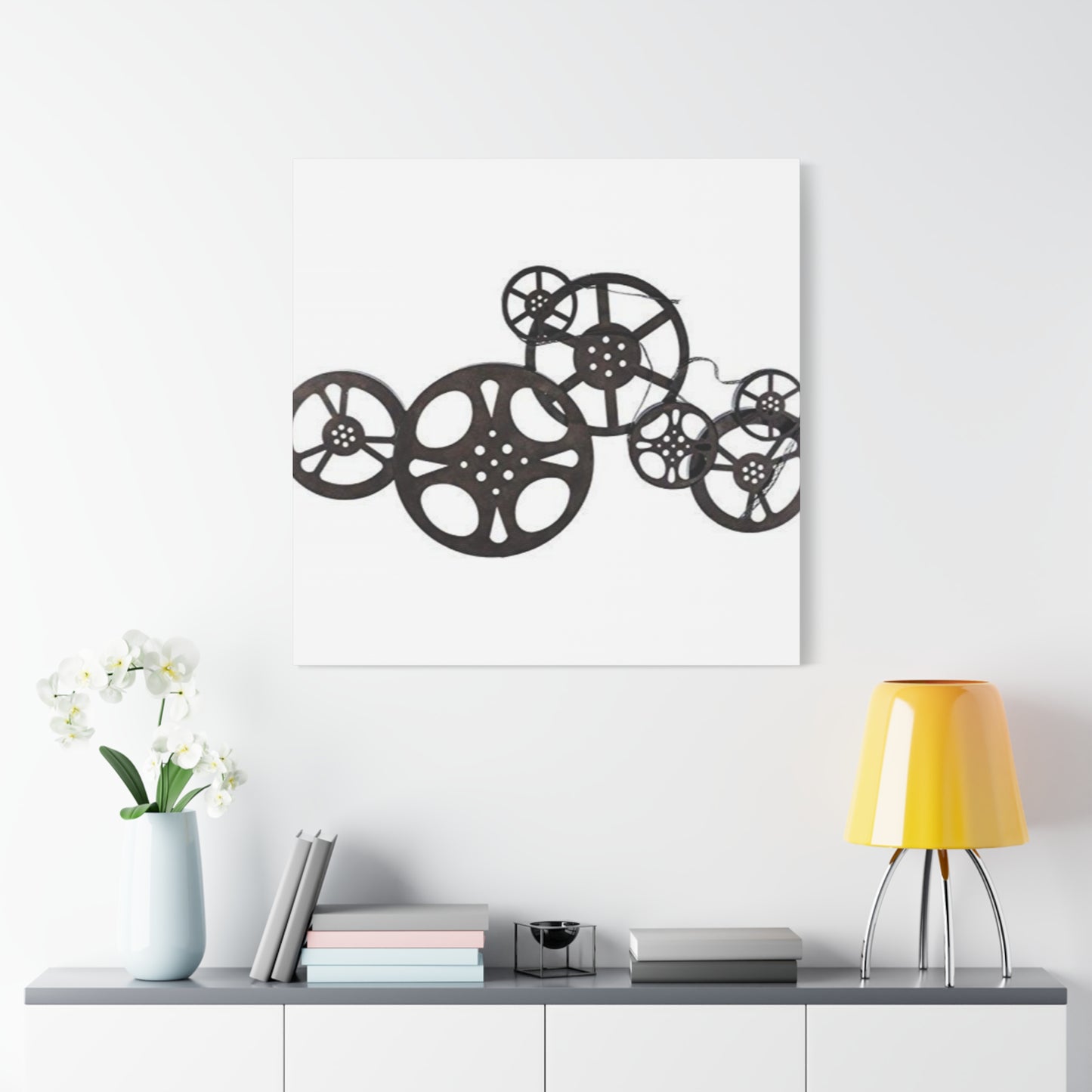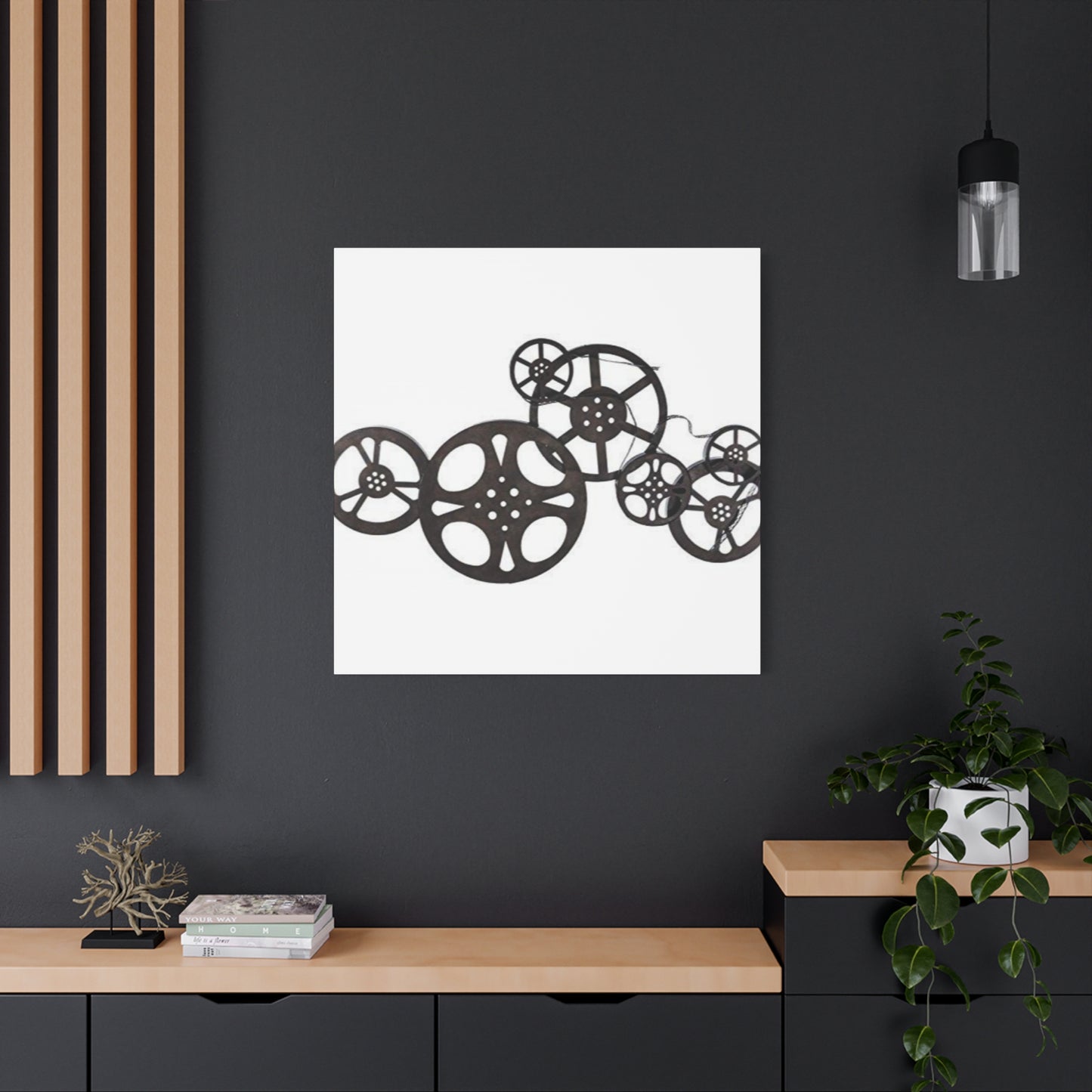Capturing Film History with Cinema Camera Reel Wall Art
Cinema camera reel wall art represents a fascinating intersection of film history, artistic expression, and contemporary home decoration. These visual representations capture the essence of cinematic storytelling through the iconic imagery of film reels, projectors, and camera equipment that defined the golden age of moviemaking. The artistic interpretation of these mechanical marvels has evolved into a sophisticated form of visual communication that speaks to both film enthusiasts and art lovers alike.
The appeal of cinema camera reel wall art extends far beyond simple nostalgia. These pieces serve as cultural artifacts that preserve the memory of analog filmmaking while celebrating the technological achievements that made modern cinema possible. Artists and designers have embraced this imagery to create compelling visual narratives that honor the craftsmanship and artistry of traditional filmmaking processes. The intricate details of reel mechanisms, the play of light and shadow on metal surfaces, and the geometric precision of camera components provide rich source material for artistic interpretation.
Contemporary artists working with cinema camera reel imagery often focus on the mechanical beauty of these devices, highlighting the precision engineering and elegant functionality that characterized professional filmmaking equipment. The visual language of these artworks communicates themes of creativity, technical mastery, and the collaborative nature of film production. Through careful attention to detail and sophisticated composition techniques, these pieces transform utilitarian objects into symbols of artistic achievement and cultural significance.
The popularity of cinema camera reel wall art reflects a broader cultural appreciation for analog technologies and handcrafted artistry. In an increasingly digital world, these images remind viewers of a time when filmmaking required tangible materials, physical manipulation, and mechanical precision. The tactile quality of film reels, the weight of professional cameras, and the complexity of projection systems represent a lost world of craftsmanship that continues to inspire contemporary artists and designers.
Historical Origins of Cinema Camera Reel Imagery in Artistic Expression
The artistic representation of cinema camera reels traces its origins to the earliest days of motion picture technology. During the late 19th and early 20th centuries, the mechanical complexity and visual appeal of filmmaking equipment captured the imagination of artists, photographers, and illustrators who recognized the aesthetic potential of these innovative devices. Early promotional materials for movie theaters and film studios frequently featured detailed illustrations of projectors, cameras, and film reels as symbols of technological progress and entertainment sophistication.
The industrial design movement of the 1920s and 1930s played a crucial role in elevating cinema equipment to the status of artistic objects. Designers like Raymond Loewy and Henry Dreyfuss applied streamlined aesthetics to consumer products, including film projectors and cameras, creating visually appealing forms that emphasized both functionality and beauty. These design principles influenced how artists approached the representation of cinema equipment, leading to stylized depictions that emphasized geometric forms, metallic surfaces, and precision engineering.
Art Deco movement significantly impacted the visual representation of cinema technology during the golden age of Hollywood. The movement's emphasis on geometric patterns, metallic finishes, and streamlined forms perfectly complemented the mechanical aesthetics of film equipment. Movie palace architecture of this era incorporated cinema imagery into decorative schemes, featuring stylized representations of film reels, cameras, and projectors as architectural elements. These decorative applications established cinema equipment as legitimate subjects for artistic interpretation and cultural celebration.
The emergence of pop art in the 1950s and 1960s brought new perspectives to cinema camera reel imagery. Artists like Andy Warhol and Roy Lichtenstein explored mass media themes, including the production and distribution mechanisms of popular entertainment. While these artists focused primarily on celebrity images and commercial graphics, their work established precedents for examining the infrastructure of media production as worthy artistic subjects. This conceptual framework laid groundwork for subsequent generations of artists who would explore cinema equipment imagery more directly.
Documentary photography movements of the mid-20th century contributed to the artistic appreciation of cinema equipment through behind-the-scenes photography that revealed the mechanical complexity and human scale of professional filmmaking operations. Photographers working on movie sets captured compelling images of massive cameras, elaborate lighting setups, and complex film processing equipment. These photographs demonstrated the visual drama inherent in cinema production technology and inspired artists to explore similar themes in their own work.
The preservation movement that emerged in the 1970s and 1980s brought renewed attention to historical cinema equipment as cultural artifacts worthy of artistic celebration. Museums, film archives, and private collectors began displaying vintage cameras, projectors, and editing equipment as examples of industrial design excellence. This institutional recognition validated the aesthetic value of cinema technology and encouraged artists to explore these subjects with greater depth and sophistication.
Contemporary digital art movements have embraced cinema camera reel imagery as symbols of analog authenticity and mechanical precision. Artists working in various media use these images to comment on the relationship between traditional and digital technologies, often highlighting the tactile qualities and visible mechanisms that distinguished analog filmmaking from contemporary digital processes. This nostalgic appreciation has generated significant interest in cinema equipment imagery across multiple artistic disciplines and commercial applications.
Enhancing Living Areas with Cinema Camera Reel Artistic Elements
The integration of cinema camera reel wall art into residential environments requires careful consideration of scale, placement, and thematic coherence to achieve maximum visual impact. These artistic pieces function as more than mere decoration; they serve as conversation starters, cultural statements, and focal points that reflect the inhabitant's appreciation for film history and artistic expression. The successful incorporation of such artwork depends on understanding the relationship between the piece's visual characteristics and the surrounding architectural elements.
Scale considerations play a fundamental role in the effective display of cinema camera reel wall art. Large-scale pieces can dominate a room and create dramatic focal points, particularly in areas with high ceilings or expansive wall surfaces. Medium-sized works often function well as part of gallery wall arrangements or in conjunction with furniture groupings. Smaller pieces work effectively in intimate settings or as accent elements within larger decorative schemes. The key lies in matching the artwork's scale to the proportional relationships within the room while ensuring adequate viewing distances for optimal appreciation.
Color relationships between cinema camera reel artwork and existing room elements require thoughtful coordination to achieve visual harmony. The typically monochromatic or limited color palettes of these pieces make them relatively easy to integrate with various decorating schemes. The metallic tones commonly found in cinema equipment imagery complement both warm and cool color schemes, while the high contrast between light and dark elements can provide visual excitement in otherwise neutral environments. Understanding these color dynamics helps ensure successful integration with existing furnishings and architectural features.
Lighting design significantly impacts the visual effectiveness of cinema camera reel wall art. The metallic surfaces and mechanical details depicted in these pieces respond well to directional lighting that emphasizes texture and dimensional qualities. Picture lighting, track lighting, or strategically placed accent lights can enhance the visual drama of these works while creating interesting shadow patterns that complement the mechanical themes. Natural lighting conditions throughout the day will also affect how these pieces appear, making it important to consider both artificial and natural illumination when determining optimal placement.
The thematic relationship between cinema camera reel artwork and surrounding furnishings can either support or conflict with the overall design concept. Contemporary furniture with clean lines and metallic accents often complements the industrial aesthetics of cinema equipment imagery. Traditional furnishings might create interesting contrasts that highlight the technological themes while adding historical depth to the overall composition. The key lies in achieving balance between thematic coherence and visual interest without creating overwhelming stylistic conflicts.
Room function considerations influence how cinema camera reel wall art contributes to the overall environmental experience. In entertainment areas, these pieces can reinforce themes of media consumption and technological appreciation. In professional settings, they might communicate creativity, innovation, and attention to detail. In private areas, they can serve as personal statements about cultural interests and aesthetic preferences. Understanding the functional context helps determine appropriate scale, placement, and thematic emphasis for maximum effectiveness.
Maintenance and preservation concerns affect the long-term success of cinema camera reel wall art installations. These pieces often feature detailed imagery that benefits from regular cleaning and protection from direct sunlight, humidity fluctuations, and temperature extremes. Canvas prints require different care than framed photographs or metal prints, making it important to understand the specific requirements of each medium. Proper mounting systems ensure secure installation while allowing for seasonal adjustments and potential repositioning as decorating schemes evolve over time.
Contemporary Versus Historical Cinema Camera Reel Canvas Artwork
The distinction between contemporary and vintage-style cinema camera reel canvas prints reflects broader trends in artistic interpretation, manufacturing technology, and cultural appreciation of film history. Contemporary approaches to this subject matter often emphasize high-definition reproduction techniques, modern color palettes, and stylized graphic interpretations that appeal to current aesthetic preferences. These works frequently incorporate digital manipulation techniques that enhance visual drama while maintaining the essential character of cinema equipment imagery.
Modern canvas printing technology enables artists to achieve unprecedented levels of detail and color accuracy in cinema camera reel artwork. High-resolution digital capture and advanced printing processes can reproduce the subtle textures of metal surfaces, the complexity of mechanical components, and the interplay of light and shadow that characterizes professional cinema equipment. These technical capabilities allow contemporary artists to create works that rival traditional photographic prints in terms of detail while offering the durability and visual impact associated with canvas media.
Contemporary artistic interpretations of cinema camera reels often incorporate graphic design elements, stylized color schemes, and compositional approaches that reflect current visual trends. Artists working in this mode might emphasize abstract qualities, geometric relationships, or conceptual themes rather than literal representation. These approaches can create visually striking pieces that function effectively in modern environments while maintaining clear connections to cinema history and technology.
Vintage-style cinema camera reel canvas prints typically emphasize historical accuracy, period-appropriate color palettes, and traditional compositional approaches that evoke the golden age of Hollywood filmmaking. These works often feature sepia tones, high contrast black and white imagery, or carefully researched period color schemes that reflect the visual aesthetics of specific historical eras. The goal is to capture not just the appearance of cinema equipment but the cultural context and aesthetic sensibilities of particular time periods.
The manufacturing processes used for vintage-style prints often attempt to replicate traditional photographic techniques or printing methods that were common during the era being referenced. This might involve specialized aging processes, textural treatments, or color manipulation techniques that simulate the appearance of historical photographs or promotional materials. These technical approaches help create authentic-looking pieces that function as both artwork and historical documents.
Market preferences for contemporary versus vintage cinema camera reel artwork often reflect generational differences and personal aesthetic preferences. Younger collectors might prefer contemporary interpretations that complement modern furnishing styles and current color trends. Older collectors or those with strong connections to film history might gravitate toward vintage-style pieces that evoke specific memories or historical periods. Understanding these market dynamics helps artists and retailers develop appropriate product offerings for different customer segments.
The cultural significance of contemporary versus vintage approaches reflects different attitudes toward technology, nostalgia, and artistic expression. Contemporary pieces might emphasize the ongoing relevance of cinema technology themes in digital age contexts. Vintage-style works often celebrate specific historical achievements or cultural moments associated with cinema development. Both approaches contribute valuable perspectives to the ongoing conversation about technology, artistry, and cultural preservation in contemporary society.
Investment and collectibility considerations affect the long-term value proposition of contemporary versus vintage cinema camera reel artwork. Original vintage pieces from significant historical periods or renowned artists typically command higher prices and demonstrate stronger appreciation potential. Contemporary pieces might offer better initial value but uncertain long-term investment prospects. Limited edition contemporary works by established artists can bridge these categories by combining current artistic standards with collectibility factors that appeal to serious collectors.
Cinema Camera Reels as Symbols of Filmmaking Enchantment
The symbolic power of cinema camera reels extends far beyond their mechanical function to encompass themes of creativity, storytelling, technological achievement, and cultural transformation. These objects represent the intersection of artistry and engineering that made motion pictures possible, serving as tangible links between creative vision and technical execution. In wall art applications, camera reel imagery communicates complex ideas about the nature of artistic creation, the collaborative process of filmmaking, and the enduring power of visual storytelling.
The circular form of film reels carries deep symbolic significance across cultures and artistic traditions. Circles represent completeness, cycles, continuity, and infinite possibility in numerous symbolic systems. When applied to cinema equipment, these associations suggest the cyclical nature of creative processes, the continuous flow of storytelling, and the infinite potential for artistic expression. The mechanical precision required for proper reel function also suggests themes of craftsmanship, attention to detail, and technical mastery that characterize professional filmmaking.
The material properties of film reels contribute to their symbolic resonance in artistic contexts. The metallic construction suggests permanence, precision, and industrial achievement, while the delicate film medium represents fragility, temporality, and the ephemeral nature of recorded experience. This contrast between durable mechanism and fragile content creates tension that artists can explore through various interpretive approaches, highlighting themes of preservation, memory, and the relationship between technology and human experience.
The collaborative nature of filmmaking finds expression in cinema camera reel imagery through the interconnected components and complex systems required for successful operation. Individual reels, cameras, and projection equipment function as part of larger technological ecosystems that require multiple skilled operators working in coordination. This systemic complexity can symbolize teamwork, interdependence, and the collective nature of creative achievement, making camera reel artwork particularly appropriate for environments that celebrate collaboration and shared accomplishment.
The transformation of static images into moving pictures through cinema technology represents one of humanity's most significant artistic and technological achievements. Camera reel imagery can evoke this transformative power, suggesting themes of innovation, creative breakthrough, and the ability to bring imagination to life through technical means. These associations make cinema equipment artwork particularly meaningful for individuals and organizations involved in creative industries, educational institutions, and innovation-focused environments.
The historical evolution of cinema technology embedded in camera reel imagery provides rich symbolic content related to progress, adaptation, and technological development. From hand-cranked cameras to sophisticated automated systems, cinema equipment represents continuous innovation and improvement over time. Artists can emphasize these evolutionary themes through comparative presentations, historical sequences, or stylized interpretations that highlight technological advancement and human ingenuity.
The global reach of cinema culture gives camera reel imagery universal symbolic significance that transcends cultural and linguistic boundaries. Film has become a truly international art form that creates shared experiences and common cultural references across diverse populations. Camera reel artwork can evoke these themes of cultural exchange, shared humanity, and universal storytelling that characterize cinema at its finest, making such pieces appropriate for international settings and multicultural environments.
The preservation challenges associated with film media add layers of symbolic meaning related to cultural heritage, historical documentation, and the fragility of recorded experience. Many significant films have been lost due to deterioration, accidents, or neglect, making surviving examples precious cultural artifacts. Camera reel imagery can evoke these preservation themes while celebrating the dedicated efforts of archivists, collectors, and institutions working to maintain cinema heritage for future generations.
Integrating Cinema Camera Reel Artwork in Entertainment Areas
The development of dedicated home entertainment environments has created new opportunities for cinema camera reel wall art to function as both decorative elements and thematic reinforcement for media consumption activities. These specialized environments benefit from cohesive design approaches that support the primary function while creating visually engaging and culturally meaningful experiences. Cinema camera reel artwork can contribute significantly to these goals through careful selection, placement, and integration with other design elements.
Acoustic considerations play a crucial role in home theater design and can influence the selection and placement of cinema camera reel wall art. Sound-absorbing materials and surface treatments that support optimal audio performance might affect the choice between canvas prints, framed works, or alternative mounting systems. The visual impact of acoustic treatments can be enhanced through strategic placement of cinema-themed artwork that maintains thematic coherence while supporting functional requirements. Understanding these relationships ensures that artistic elements contribute positively to both visual and auditory experiences.
The technical infrastructure required for modern home theaters creates both opportunities and challenges for artwork integration. Cable management systems, equipment mounting requirements, and ventilation needs must be coordinated with artwork placement to achieve clean, professional installations. Cinema camera reel artwork can be positioned to help conceal or minimize the visual impact of technical elements while maintaining clear sightlines and proper equipment access. These functional considerations require careful planning during the design development phase.
Lighting control systems in home theaters offer sophisticated opportunities for enhancing cinema camera reel wall art through programmable illumination sequences. Artwork lighting can be coordinated with viewing activities, creating different ambiance settings for various entertainment activities. Dimming capabilities allow artwork to remain visible during low-light viewing while preventing distraction from screen content. Advanced control systems can even synchronize artwork lighting with movie content for enhanced thematic experiences.
The scale relationships in home theater environments often favor larger artwork that can hold visual weight against big screens and substantial seating arrangements. Cinema camera reel imagery works particularly well at large scales, where mechanical details and surface textures can be appreciated even from typical viewing distances. Multiple related pieces can create gallery wall effects that provide visual interest during intermissions while supporting overall thematic development. The key lies in achieving appropriate proportional relationships between artwork, screens, and seating arrangements.
Color coordination between cinema camera reel artwork and theater environments requires consideration of both ambient lighting conditions and screen color calibration requirements. The neutral tones commonly found in cinema equipment imagery typically complement the controlled color schemes preferred for optimal viewing experiences. However, artwork colors can affect perception of screen content, making it important to select pieces that support rather than compete with primary viewing activities. Professional color consultation might be valuable for high-end installations.
The integration of cinema camera reel artwork with other movie memorabilia creates opportunities for comprehensive thematic development that celebrates film culture broadly. Vintage movie posters, original promotional materials, and authentic cinema equipment can work together with contemporary artwork to create rich, layered environments that tell complete stories about film history and appreciation. These comprehensive approaches require careful curation to avoid visual chaos while maintaining individual piece effectiveness.
Storage and display solutions for home theaters often include specialized cabinetry and built-in elements that can be enhanced through strategic artwork placement. Cinema camera reel pieces can be integrated with equipment displays, media storage systems, and architectural elements to create cohesive designs that maximize visual impact while maintaining practical functionality. Custom framing and mounting solutions might be required to achieve optimal integration with built-in elements and architectural features.
Optimal Color Schemes for Cinema Camera Reel Canvas Artwork
The selection of appropriate color palettes for cinema camera reel canvas prints significantly impacts their visual effectiveness and integration potential within various environments. The inherent characteristics of cinema equipment imagery provide natural color cues that can guide palette development, while contemporary artistic interpretation allows for creative expansion beyond literal representation. Understanding these color relationships enables informed decision-making that maximizes both aesthetic impact and practical compatibility with existing decorative schemes.
Monochromatic approaches to cinema camera reel artwork emphasize the sculptural qualities and mechanical details that characterize this subject matter. Black and white presentations can create dramatic visual impact while ensuring compatibility with virtually any color scheme. The high contrast potential of monochromatic cinema equipment imagery makes it particularly effective for creating focal points or adding visual weight to otherwise light or neutral environments. Subtle tonal variations within monochromatic schemes can provide sophistication and depth without compromising the clean, technical aesthetic.
Sepia and warm-toned interpretations of cinema camera reel imagery evoke vintage aesthetic sensibilities while providing gentle color presence that complements traditional and transitional decorating approaches. These warmer palettes can soften the industrial character of cinema equipment while maintaining clear thematic connections to film history. The nostalgic associations of sepia tones can enhance the emotional appeal of these pieces while providing color coordination opportunities with wood finishes, leather furnishings, and other warm-toned elements.
Metallic color schemes reflect the actual material characteristics of cinema equipment while offering sophisticated palette options for contemporary environments. Silver, bronze, copper, and gold tones can be emphasized through artistic interpretation to create pieces that complement specific metal finishes used in furnishings, lighting fixtures, and architectural elements. These metallic approaches can add luxury appeal while maintaining authentic connections to the industrial heritage of cinema technology. The reflective qualities suggested by metallic color schemes can also enhance lighting design effectiveness.
Cool-toned interpretations of cinema camera reel artwork can emphasize the precision engineering and technological sophistication associated with professional filmmaking equipment. Blue, gray, and silver palettes can create connections with contemporary design trends while highlighting the mechanical aspects of the subject matter. These cooler approaches work particularly well in modern environments with glass, steel, and other contemporary materials. The association between blue tones and technical precision can reinforce themes of craftsmanship and professional competence.
Limited color accent approaches use predominantly neutral backgrounds with selective color emphasis on specific elements within the composition. This technique can highlight particular components, create visual movement, or establish connections with specific color schemes within the surrounding environment. Red accents might emphasize recording indicators or brand elements, while blue accents could highlight precision components or optical elements. These selective approaches provide color flexibility while maintaining sophisticated restraint.
Environmental color coordination requires consideration of both permanent architectural elements and changeable decorative components when selecting cinema camera reel artwork palettes. Flooring materials, wall colors, and fixed architectural features establish baseline color relationships that artwork must accommodate. However, seasonal decorating changes, furniture updates, and evolving personal preferences suggest the value of selecting artwork with sufficient color flexibility to remain effective through various environmental changes over time.
The psychological impact of different color approaches to cinema camera reel artwork can influence the emotional character of environments and support specific functional objectives. Warmer palettes tend to create more intimate, comfortable atmospheres suitable for relaxation and social activities. Cooler palettes often support concentration, technical activities, and professional environments. Understanding these psychological associations helps ensure that artwork color choices support intended environmental experiences while maintaining appropriate thematic connections.
Lighting interaction with cinema camera reel artwork colors requires consideration of both natural and artificial illumination sources throughout daily and seasonal cycles. Colors that appear vibrant under daylight conditions might seem flat under tungsten lighting, while colors that work well under warm artificial light might appear washed out in bright natural light. LED lighting systems with color temperature adjustment capabilities can help optimize artwork appearance under various conditions, but initial color selection should consider the range of lighting conditions the piece will experience.
Creative DIY Approaches for Cinema Camera Reel Wall Art Projects
The development of personal cinema camera reel wall art through do-it-yourself approaches offers opportunities for customized expression while building deeper connections with the subject matter through hands-on creative processes. These projects can range from simple photograph mounting and framing to complex mixed-media installations that incorporate authentic materials and sophisticated artistic techniques. The key to successful DIY cinema camera reel artwork lies in matching project ambition with available skills, tools, and resources while maintaining high standards for visual effectiveness and durability.
Photography-based DIY projects provide accessible entry points for creating personalized cinema camera reel wall art using readily available equipment and materials. High-quality photographs of vintage cinema equipment can be captured at museums, antique shops, film festivals, or private collections with appropriate permissions. Digital photography techniques allow for extensive post-processing manipulation to achieve desired aesthetic effects, color treatments, and compositional adjustments. Home printing capabilities using professional-grade inkjet printers and archival papers can produce museum-quality results suitable for permanent display.
Digital manipulation and graphic design approaches enable creative reinterpretation of cinema camera reel imagery through software-based artistic processes. Original photographs can be combined, stylized, colorized, or abstracted using programs like Photoshop, GIMP, or specialized artistic software. These digital techniques allow for unlimited experimentation with color schemes, compositional arrangements, and visual effects while maintaining the ability to produce multiple variations or sizes from the same source material. Online printing services can convert digital files into high-quality canvas prints or other display formats.
Mixed-media projects incorporate authentic materials and three-dimensional elements to create unique cinema camera reel artwork that goes beyond traditional flat presentations. Actual film strips, vintage camera parts, or reproduction components can be integrated into shadow boxes, collage compositions, or sculptural installations. These projects require more advanced crafting skills and specialized materials but can produce highly distinctive pieces that combine historical authenticity with contemporary artistic interpretation. Safety considerations are important when working with vintage materials that might contain hazardous substances.
Stenciling and painting techniques allow for large-scale cinema camera reel artwork creation using relatively simple materials and tools. Hand-cut stencils or commercially produced templates can guide paint application for crisp, professional-looking results. Multiple stencil layers can create complex compositions with sophisticated color relationships and detailed imagery. These approaches work particularly well for temporary installations, experimental projects, or situations where canvas prints might be impractical due to size, location, or budget constraints.
Transfer and decoupage methods enable the incorporation of printed imagery onto various surfaces including wood panels, canvas boards, or metal sheets. These techniques can create vintage-looking pieces that suggest aged photographs or historical promotional materials. Proper surface preparation, adhesive selection, and protective coating application are crucial for achieving durable, professional-quality results. Distressing techniques can add authentic aging effects that enhance the vintage character of cinema-themed projects.
Collaborative DIY projects involving family members or groups can create meaningful shared experiences while producing personalized cinema camera reel artwork. Photography expeditions to capture source material, group painting sessions, or family assembly projects can build connections with both the creative process and the finished artwork. These collaborative approaches often produce pieces with special emotional significance that goes beyond purely aesthetic considerations, making them particularly valuable for personal environments.
Tool and material selection significantly impacts the success and efficiency of DIY cinema camera reel artwork projects. Basic projects might require only standard crafting supplies, while more ambitious undertakings could benefit from specialized equipment, professional-grade materials, and dedicated work areas. Building tool collections gradually allows for increasingly sophisticated project development over time. Many communities offer maker spaces, art centers, or educational facilities with access to advanced equipment and expert guidance for complex projects.
Documentation and iteration approaches help improve DIY project outcomes through systematic record-keeping and continuous refinement. Photographing work-in-progress stages, maintaining material logs, and recording technique observations support skill development and future project planning. Creating multiple versions or variations of successful pieces allows for refinement and customization for different locations or recipients. These systematic approaches transform casual crafting activities into serious artistic development processes that can produce consistently high-quality results.
Renowned Artists Influenced by Cinema Camera Reel Aesthetics
The artistic exploration of cinema camera reel imagery has attracted numerous notable artists throughout the 20th and 21st centuries, each bringing unique perspectives and technical approaches to this rich subject matter. These artists have contributed to the elevation of cinema equipment from purely functional objects to symbols of cultural significance and artistic inspiration. Their work has established important precedents for contemporary artists while demonstrating the enduring appeal and versatility of cinema-related themes in fine art contexts.
The Pop Art movement of the 1960s included several artists who explored mass media themes including the technical infrastructure of entertainment production. While not exclusively focused on cinema equipment, these artists established conceptual frameworks for examining the material culture of media production as legitimate artistic subjects. Their work demonstrated how industrial objects could be transformed into powerful artistic statements through careful selection, presentation, and contextual manipulation. These precedents encouraged subsequent generations of artists to explore cinema equipment imagery with greater confidence and sophistication.
Contemporary photographers have made significant contributions to the artistic documentation and interpretation of cinema equipment through both documentary and fine art approaches. These artists often focus on the sculptural qualities, mechanical precision, and historical significance of vintage cinema technology while creating images that function as independent artistic statements. Their work has helped establish photography as a primary medium for exploring cinema equipment themes while demonstrating the ongoing relevance of these subjects in contemporary artistic discourse.
Sculptors working with found objects and industrial materials have incorporated actual cinema equipment components into three-dimensional artworks that explore themes of technology, obsolescence, and cultural transformation. These artists often combine vintage film reels, camera parts, and projection equipment with other materials to create complex installations that comment on the relationship between technology and artistic expression. Their work has expanded the conceptual framework for cinema equipment art beyond two-dimensional representation into fully immersive environmental experiences.
Digital artists and new media practitioners have embraced cinema camera reel imagery as source material for interactive installations, video art, and computer-generated compositions that explore the relationship between traditional and contemporary media technologies. These artists often use cinema equipment imagery as metaphors for media transformation, technological obsolescence, and the evolution of artistic practices in digital age contexts. Their work creates bridges between historical cinema technology and contemporary artistic expression while exploring themes relevant to both traditional and digital media practitioners.
Printmakers have found cinema camera reel imagery particularly well-suited to various traditional and contemporary printing techniques that can emphasize the mechanical precision and industrial character of this subject matter. Etching, lithography, screen printing, and digital printing methods each offer unique interpretive possibilities for cinema equipment themes while maintaining connections to the craft traditions that paralleled the development of cinema technology. These artists have contributed to the development of technical approaches specifically suited to cinema equipment subject matter.
Installation artists have created large-scale environments that incorporate cinema camera reel imagery alongside authentic equipment, historical documents, and interactive elements to create comprehensive explorations of cinema culture and technology. These ambitious projects often require extensive research, collaboration with film historians and equipment collectors, and sophisticated technical execution. Their work has demonstrated the potential for cinema equipment themes to support major artistic undertakings while providing educational and cultural value to diverse audiences.
The influence of cinema camera reel imagery on commercial art and graphic design has created additional pathways for artistic exploration while establishing market demand for high-quality interpretive works. Commercial artists working for film studios, entertainment companies, and media organizations have developed sophisticated approaches to cinema equipment imagery that balance artistic merit with commercial effectiveness. This commercial development has supported professional artistic careers while maintaining cultural visibility for cinema equipment themes.
Academic artists working in university and institutional contexts have contributed scholarly research and experimental approaches to cinema camera reel imagery that expand the theoretical and conceptual foundations for this artistic territory. These artists often combine historical research with innovative artistic techniques to create works that function as both artistic statements and educational resources. Their contributions have helped establish cinema equipment art as a legitimate area of academic study while developing methodologies that support continued artistic development in this field.
Professional Presentation Techniques for Cinema Camera Reel Canvas Artwork
The effective display of cinema camera reel canvas prints requires sophisticated understanding of framing techniques, mounting systems, and environmental considerations that maximize visual impact while ensuring long-term preservation. Professional presentation approaches can transform even modest artwork into commanding visual elements that enhance environmental quality while protecting investment value through proper conservation practices. The technical aspects of display planning deserve careful attention to achieve optimal results that satisfy both aesthetic and practical requirements.
Canvas mounting and stretching techniques significantly affect the visual presentation and longevity of cinema camera reel artwork. Gallery-wrapped canvases with printed edges provide clean, contemporary presentations that eliminate the need for traditional frames while maintaining focus on the artwork itself. Museum-quality stretcher bars with proper tensioning systems ensure flat, stable presentation that resists warping and sagging over time. Acid-free backing materials and conservation-grade mounting hardware contribute to long-term stability while preventing chemical deterioration that can damage canvas and printed surfaces.
Frame selection for cinema camera reel canvas prints should complement the industrial aesthetic of the subject matter while providing appropriate visual weight and presence for the intended environment. Metal frames in silver, bronze, or black finishes often work well with the mechanical themes while providing contemporary sophistication. Wood frames can soften the industrial character when appropriate for traditional or transitional environments. The frame width and profile should be proportioned to the artwork size and viewing distance to achieve balanced visual relationships without overwhelming the image content.
Matting considerations for framed cinema camera reel prints involve color coordination, proportion planning, and conservation requirements that support both visual effectiveness and preservation goals. Neutral mat colors typically work well with the monochromatic or limited color palettes common in cinema equipment imagery. Mat width should be proportioned to artwork size and frame dimensions to create harmonious relationships. Conservation-grade mat materials prevent chemical interactions that can cause discoloration or deterioration over time. Multiple mat layers can add dimensional interest while providing additional protection.
Glazing options for framed cinema camera reel artwork include various types of glass and acrylic materials that provide different levels of protection, optical clarity, and reflective characteristics. Museum-quality glazing materials offer superior optical clarity and UV protection while minimizing reflections that can interfere with viewing. Anti-reflective coatings can be particularly valuable for artwork displayed in bright environments or locations with challenging lighting conditions. The choice between glass and acrylic materials involves trade-offs between optical quality, weight, safety, and cost considerations.
Hanging systems and hardware selection affects both the security and flexibility of cinema camera reel artwork installations. Professional-grade hanging hardware provides secure mounting while allowing for easy repositioning when decorating schemes change. Wire hanging systems distribute weight evenly and accommodate minor wall irregularities better than rigid mounting approaches. Security considerations might require specialized hardware for valuable pieces or high-traffic locations. The visible aspects of hanging hardware should be minimized to maintain focus on the artwork itself.
Lighting design for cinema camera reel canvas prints can dramatically enhance visual impact through careful attention to illumination angle, intensity, and color temperature. Picture lights mounted directly to frames provide focused illumination that emphasizes texture and detail while creating dramatic shadow effects. Track lighting systems offer flexibility for illuminating multiple pieces or adjusting emphasis as needed. LED technology provides energy efficiency and heat reduction while offering color temperature adjustment capabilities. Avoiding direct sunlight and excessive heat helps prevent fading and material deterioration.
Environmental protection measures help preserve cinema camera reel canvas prints while maintaining optimal visual presentation over extended periods. Temperature and humidity control systems prevent dimensional changes in canvas materials that can cause cracking or delamination. Air filtration reduces dust accumulation and chemical pollutants that can cause gradual deterioration. Regular maintenance schedules for cleaning and inspection help identify potential problems before they become serious. Professional conservation assessment might be valuable for particularly important or valuable pieces.
Cinema Camera Reel Artwork as Thoughtful Presents for Film Enthusiasts
The selection of cinema camera reel wall art as gifts for film lovers requires thoughtful consideration of the recipient's specific interests, aesthetic preferences, and environmental context to ensure meaningful and lasting appreciation. These distinctive artworks can serve as powerful expressions of shared cultural interests while providing ongoing enjoyment through daily viewing and conversation-starting potential. The success of such gifts depends on matching artwork characteristics with recipient personality, lifestyle, and existing decorative preferences.
Understanding the recipient's film preferences can guide selection toward cinema camera reel artwork that resonates with their specific areas of interest and expertise. Classic film enthusiasts might appreciate vintage-style presentations that evoke the golden age of Hollywood, while contemporary film fans might prefer modern interpretations that incorporate current aesthetic trends. Documentary and art film lovers might respond to more abstract or conceptual approaches that explore cinema themes beyond literal representation. Independent film supporters might appreciate unique, artist-created pieces that reflect the independent spirit they value in cinema.
The recipient's living or working environment significantly influences appropriate size, color, and style selections for cinema camera reel wall art gifts. Urban apartment dwellers might benefit from smaller-scale pieces that work effectively in compact environments, while suburban homeowners might have opportunities for larger, more dramatic presentations. Professional environments might require more conservative approaches, while personal areas might accommodate bolder, more experimental pieces. Understanding these environmental constraints helps ensure gift appropriateness and long-term satisfaction.
Personalization opportunities can transform cinema camera reel artwork from generic gifts into meaningful, customized expressions of relationship and shared interest. Custom printing services can incorporate specific film titles, personal messages, or significant dates into artwork compositions. Limited edition pieces signed by artists provide collectibility factors that enhance gift value beyond purely decorative considerations. Commissioning original artwork based on the recipient's favorite films or cinema experiences creates unique pieces with special personal significance.
Educational value considerations can add layers of meaning to cinema camera reel artwork gifts while supporting the recipient's ongoing learning and appreciation development. Pieces that accurately represent historical equipment or significant technological developments can serve as reference materials for film students, educators, or serious enthusiasts. Documentation accompanying the artwork might include technical specifications, historical context, or artistic interpretation notes that enhance understanding and appreciation over time.
Presentation and packaging approaches can significantly impact the gift-giving experience and recipient reaction to cinema camera reel artwork. Professional framing services ensure immediate display readiness while demonstrating thoughtfulness and quality commitment. Custom packaging with cinema-themed materials reinforces the gift concept while providing protection during transport and storage. Accompanying materials such as books, documentaries, or related memorabilia can create comprehensive gift packages that extend the cinema appreciation experience beyond the artwork itself.
Budget considerations affect both initial selection options and long-term gift value for cinema camera reel artwork presents. Original artwork and limited editions typically command higher prices but offer greater uniqueness and potential appreciation value. High-quality reproductions provide access to significant imagery at moderate prices while maintaining visual impact and durability. DIY or custom printing approaches can create personalized pieces at minimal cost while demonstrating personal investment in the creative process.
Timing considerations for cinema camera reel artwork gifts might include coordination with film festival schedules, movie releases, or personal milestones related to the recipient's cinema interests. Awards season timing can enhance the relevance of cinema-themed gifts, while film school graduation or career advancement occasions provide natural contexts for professional recognition through meaningful artwork presentations. Understanding these timing opportunities helps maximize gift impact and appreciation.
Conclusion
Cinema camera reel wall art offers a captivating tribute to the rich and evolving history of filmmaking, blending nostalgia with artistic expression. These pieces celebrate the iconic tools and symbols of cinema—the camera, film reels, and the storytelling magic they enable—serving as a powerful homage to the art and craft of motion pictures. Whether you are a filmmaker, cinephile, or admirer of visual storytelling, this wall art allows you to bring a piece of film history into your space, inspiring creativity and appreciation.
The allure of cinema camera reel art lies in its ability to capture the essence of an era when storytelling was physically crafted through reels of film and the mechanical precision of vintage cameras. Through detailed illustrations, mixed-media compositions, or minimalist designs, these artworks convey the romance, passion, and technical mastery behind classic cinema. They invite viewers to reflect on the transformative power of film, evoking memories of timeless movies and the pioneers who shaped the industry.
From a design perspective, cinema camera reel wall art complements a variety of interiors—from industrial and modern lofts to cozy home theaters and eclectic creative spaces. The monochromatic tones, sepia hues, or bold contrasts often used in this art style enhance its vintage appeal and make it versatile for different décor schemes. When thoughtfully placed, such artwork becomes a focal point that sparks conversations and fuels inspiration.
Moreover, incorporating cinema-themed wall art celebrates not only the tools of filmmaking but also the stories and emotions that film evokes. It connects us to a shared cultural heritage and the universal language of storytelling, making it a meaningful addition to any environment where creativity and imagination thrive.
In conclusion, cinema camera reel wall art is a timeless homage to the history and artistry of film. It enriches your living or workspace with nostalgia, elegance, and a deep appreciation for cinematic storytelling. By adding this artwork to your décor, you honor the legacy of cinema while inspiring your own creative journey.

















